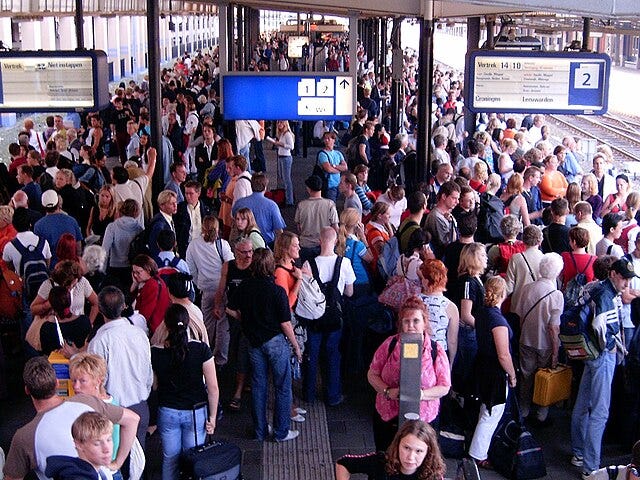
In August 2024, the Netherlands marked a significant population milestone as the number of inhabitants surpassed 18 million. This development highlights important demographic trends in the country’s recent history, with migration emerging as the primary driver of population growth.
While 72 percent of the population is of Dutch heritage, the largest minority groups continue to be those of Turkish (2.5 percent) and Moroccan descent (2.4 percent), maintaining their positions as the largest non-Dutch communities since 2016. Additionally, people of Surinamese, Indonesian, and German origins remain prominent within the top five largest minority groups.
Migration as the Key Growth Factor
Since 2015, the population of the Netherlands has primarily grown due to international migration. In the years 2022 and 2023, more people died than were born, and the population only grew because more immigrants arrived than emigrants left. This trend continued into the first half of 2024.
Shifts in Demographic Patterns
Until the 1970s, the Dutch population grew mainly because more children were born than people died, particularly during the post-World War II 'baby boom.' In the 1970s, the birth rate began to decline as people started families later in life and had fewer children. Despite this, the population continued to grow because births still outnumbered deaths. From that point on, fluctuations in population growth were increasingly influenced by migration, which in turn was shaped by international events such as wars and economic changes.
Increasing Diversity
The number of foreign-born residents in the Netherlands increased significantly between 2016 and 2024. In 2016, there were 2.1 million foreign-born residents, accounting for 12 percent of the population. By 2024, this number had grown to 2.9 million, or 16 percent of the population. The most significant contributions to this growth came from people with European and Asian backgrounds. The number of residents with Ukrainian, Syrian, and Polish origins saw the sharpest increase during this period.
Aging Population and Demographic Challenges
The Dutch population has not only become more diverse, but it has also aged. The proportion of people over 65 has increased, while the share of those under 20 has decreased. The average age of the population rose from 41.5 years in 2016 to 42.6 years in 2024. This is partly due to increased life expectancy and the fact that the post-war generation has now reached the age of 65.
Future Outlook
The combination of a declining birth rate and an aging population presents challenges for Dutch society. In 2023, only 164.500 children were born, the lowest number since the 1980s, and the average number of children per woman fell to 1.43. These developments highlight the crucial role of migration in future population growth and the need to be prepared for the demographic changes that lie ahead.
With 18 million inhabitants, the Netherlands faces the challenge of balancing population growth through migration, an aging society, and declining birth rates. These demographic trends will undoubtedly have a significant impact on the country's policy and future.
Source: CBS

